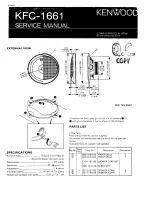
17
MN-962
TUNING THE AIR PRESSURE
Pressure determination comes down to three things — level vehicle, ride comfort and
stability.
1 . Level vehicle
If the vehicle’s headlights are shining into the trees or the vehicle is leaning to one
side, then it is not level (Fig. 26). Raise the air pressure to correct either of these
problems and level the vehicle.
2 . Ride comfort
If the vehicle has a rough or harsh ride it may be due to either too much pressure or
not enough (Fig. 27). Try different pressures to determine the best ride comfort.
3 . Stability
Stability translates into safety and should be the priority, meaning the driver may
need to sacrifice a perfectly level and comfortable ride. Stability issues include roll
control, bounce, dive during braking and sponginess (Fig. 28). Tuning out these
problems usually requires an increase in pressure.
Guidelines for Adding Air
1. Start with the vehicle level or slightly above.
2. When in doubt, always add air.
3. If the front of the vehicle dives while braking, increase the pressure in the front air
bags, if equipped.
4. If it is ever suspected that the air bags have bottomed out, increase the pressure.
(Fig. 29)
5. Adjust the pressure up and down to find the best ride.
6. If the vehicle rocks and rolls, adjust the air pressure to reduce movement.
7. It may be necessary to maintain different pressures on each side of the vehicle.
Loads such as water, fuel, and appliances will cause the vehicle to be heavier on one
side (Fig. 30). As much as a 50 PSI difference is not uncommon.
Bad headlight aim
Sway and
body roll
Rough ride
fig. 26
fig. 28
fig. 27
Bottoming out
Unlevel
Level
fig. 29
fig. 30
RideControl
Summary of Contents for RideControl 59570
Page 2: ......
Page 21: ...19 MN 962 Notes RideControl...
Page 22: ...20 MN 962 Notes RideControl...






































